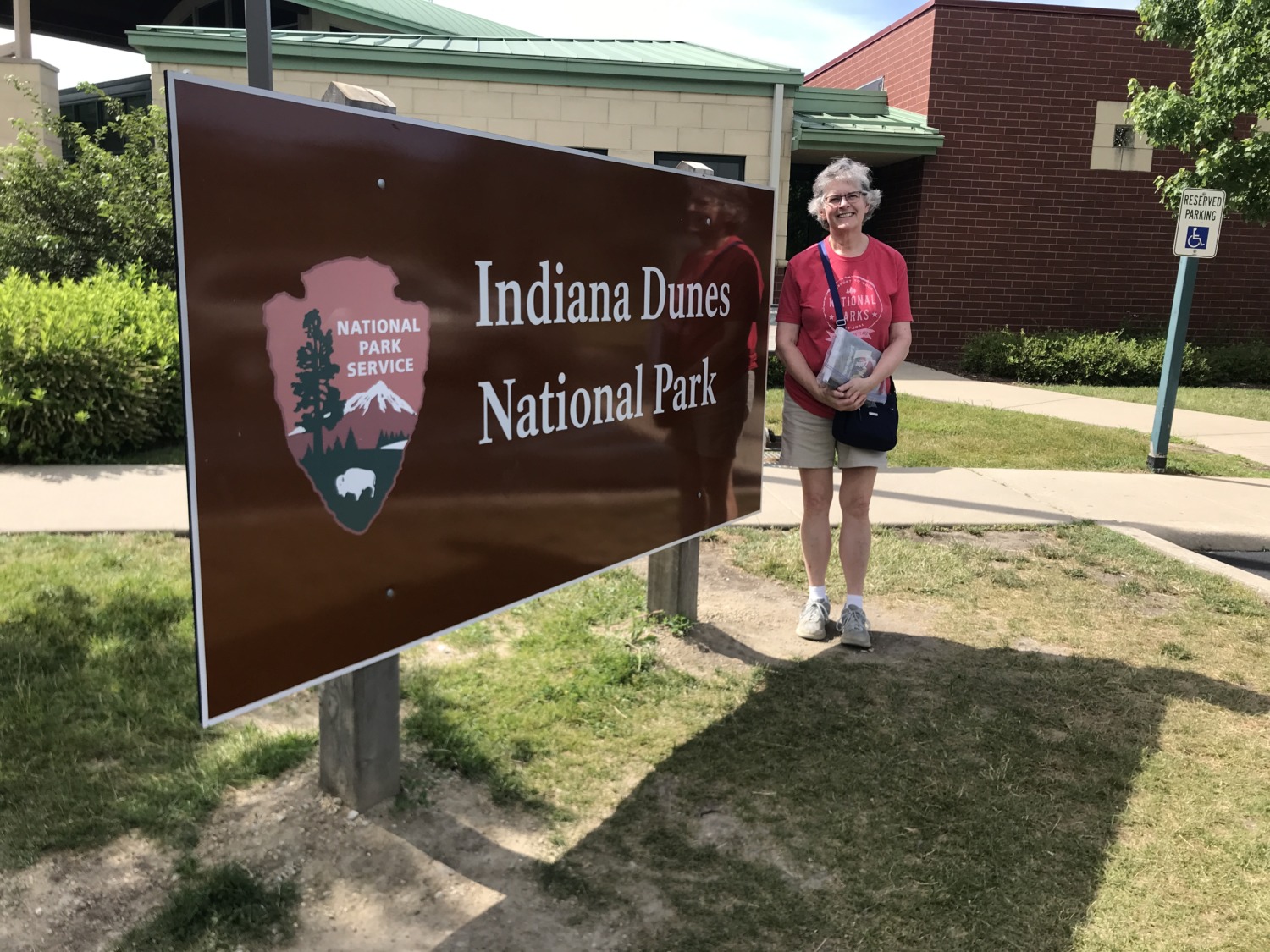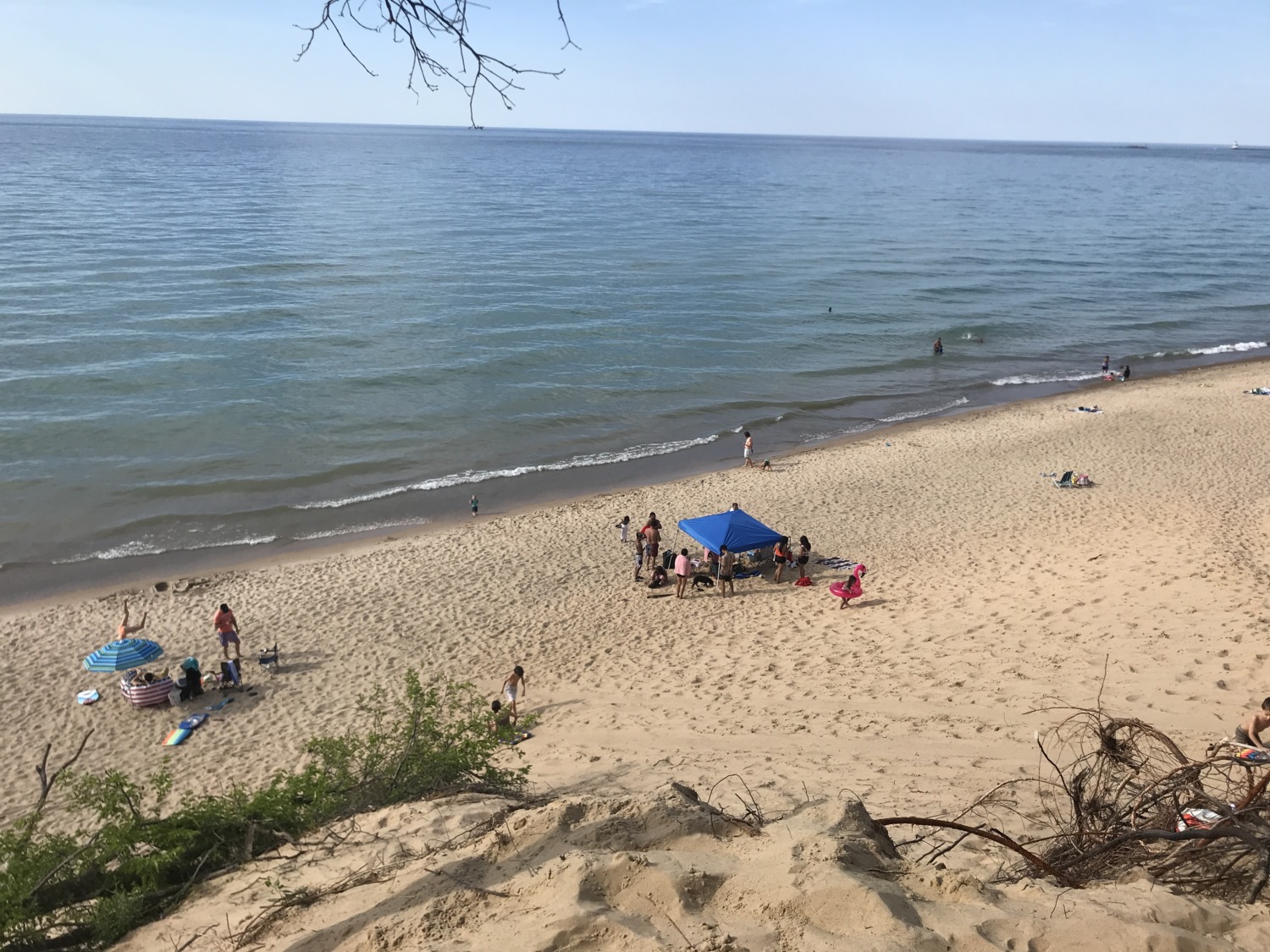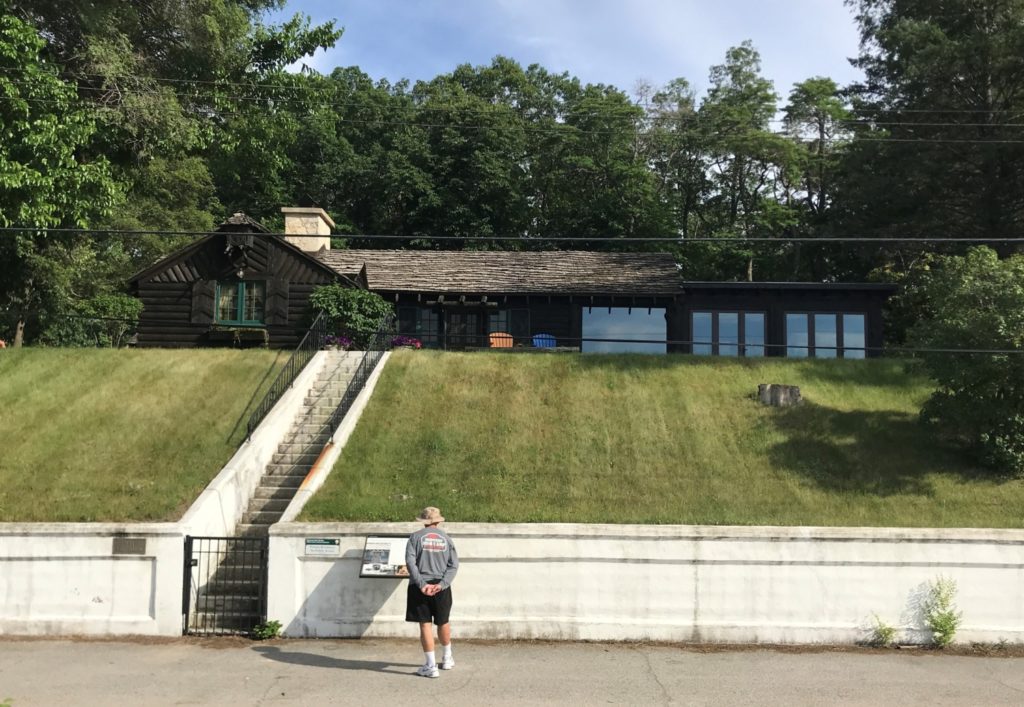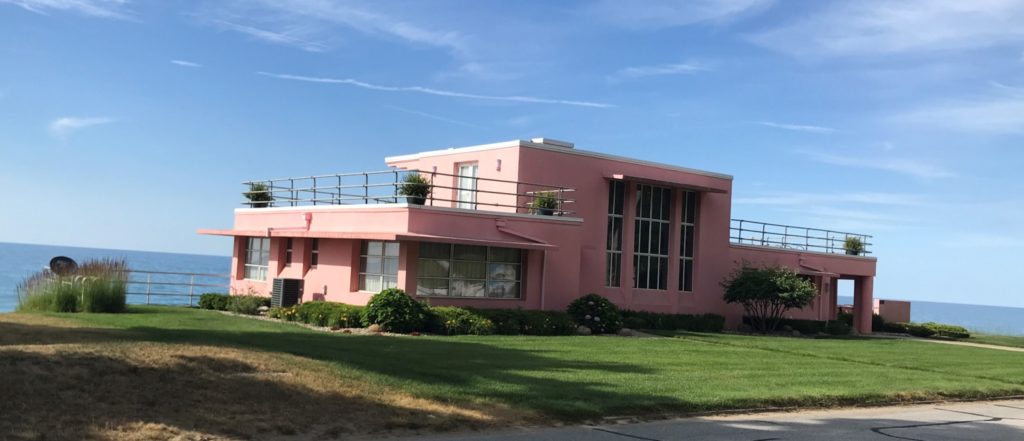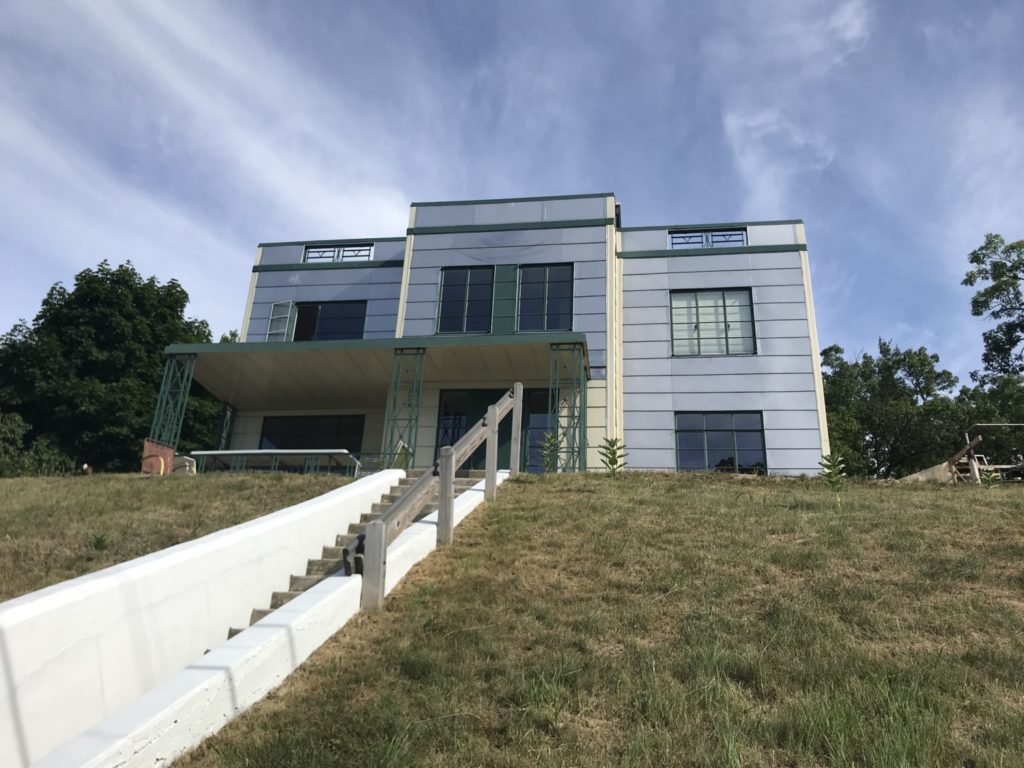After visiting Pullman National Monument, Tom and I headed east along the shore of Lake Michigan to Indiana Dunes National Park. We visited Indiana Dunes State Park about 30 years ago, but had not returned to the area since then. We have wanted to visit since Indiana Dunes changed from a National Lakeshore to a National Park. I needed to get the stamp in my Passport book!
Indiana Dunes National Park stretches over 15 miles along the southern shore of Lake Michigan. The beaches are why most people visit, but there is all kinds of biodiversity at the park. In fact, the 15,000 acres of the park are some of the most diverse in North America. There are sand dunes, bogs, marshes, forests, meadows, and rivers with 50 miles of trails in the park. This makes Indiana Dunes a favorite spot for birders.
Tom and I should have done more research before we went to the park. A more thorough reading of the website would have helped us have a better time. We started at the Visitors Center, which is a distance from the shore. We talked to a ranger and asked her favorite locations. Then we watched a movie which stressed the biodiversity of the park and its importance. With a map of the park in hand, we decided to head east to Lake Front Drive. This was not at all what the ranger we talked to recommended. She said her favorite places were West Beach and The Chelberg Farm. Those were west from the Visitors Center.
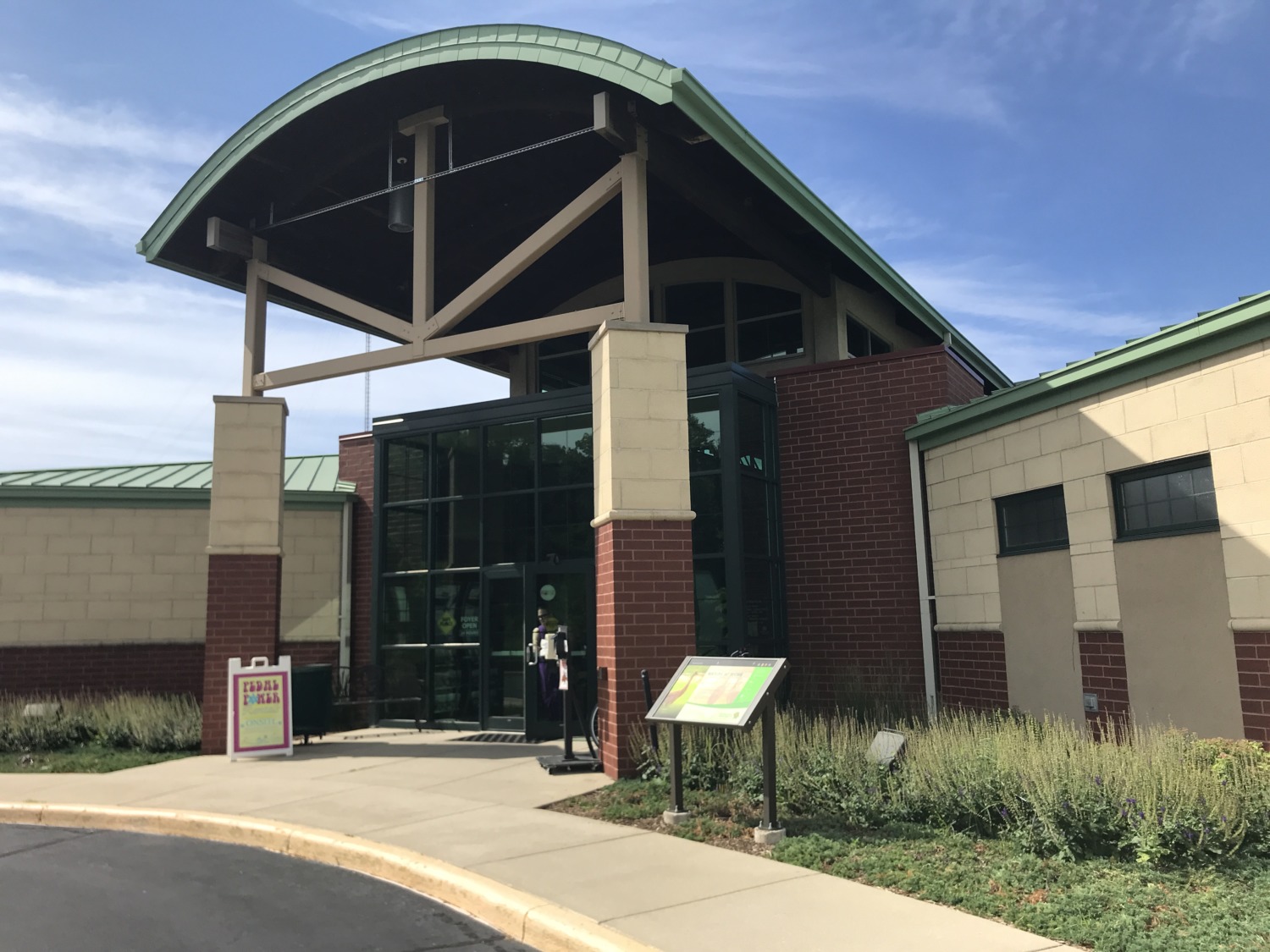
We should have listened to the park ranger. In heading east, we went to the most congested part of the park. Tom didn’t want to head back west, after we were already so far east, and I wanted to hike up Mt. Baldy, which is one of the more famous dunes in the park. So we ignored the ranger’s advice. The brochure said there were 50 miles of trails in the park. We were sure we could find a trial that we liked in another part of the park. There were several problems with heading east, which we might have known if we had looked at the website in greater detail.
First, Lake Front Drive goes through the community of Beverly Shores. Beverly Shores is a small town with about 600 residents. It was originally a resort community for wealthy people in Chicago. Beverly Shores is easily accessible on the train line from Chicago, only 36 miles away. Today the upscale homes dominate Lake Front Drive. Although the homes that bordered the beach reverted to the National Park after their owners’ lifetimes, the small community of Beverly Shores continues to be a presence inside the park. All the beach parking lots in Beverly Shores are for residents only.
Second, many of the trails that go to the dunes are closed to protect the park’s biodiversity. In fact, the only trails that you should take on the dunes are boardwalks above the dunes. Which are west, not east. Consequently, the trail to Mt. Baldy was closed. We could see it. We could even see footprints in the sand where people had totally ignored the fence around the dune and the signs that said not to walk on the dune. But we could not climb on it. West Beach, located between Gary, Indiana, and the Port of Indiana has boardwalks that allow you to walk the dunes without hurting them.

Third, the train tracks that run along the lake shore were being worked on and several roads were closed. The detours to go around the closed roads made Lake Front Drive even more congested.
Fourth, the parking lots for the beaches are all a distance from the beach. And the parking lots were very full, with people parked illegally along the road in some places. Once you found a parking spot, you often had to walk a mile on a sandy trail to the beach. When you reached the end of the trail, you still had to go down the bluffs to the beach. And there weren’t any stairs or clear paths to the beach on the east end.
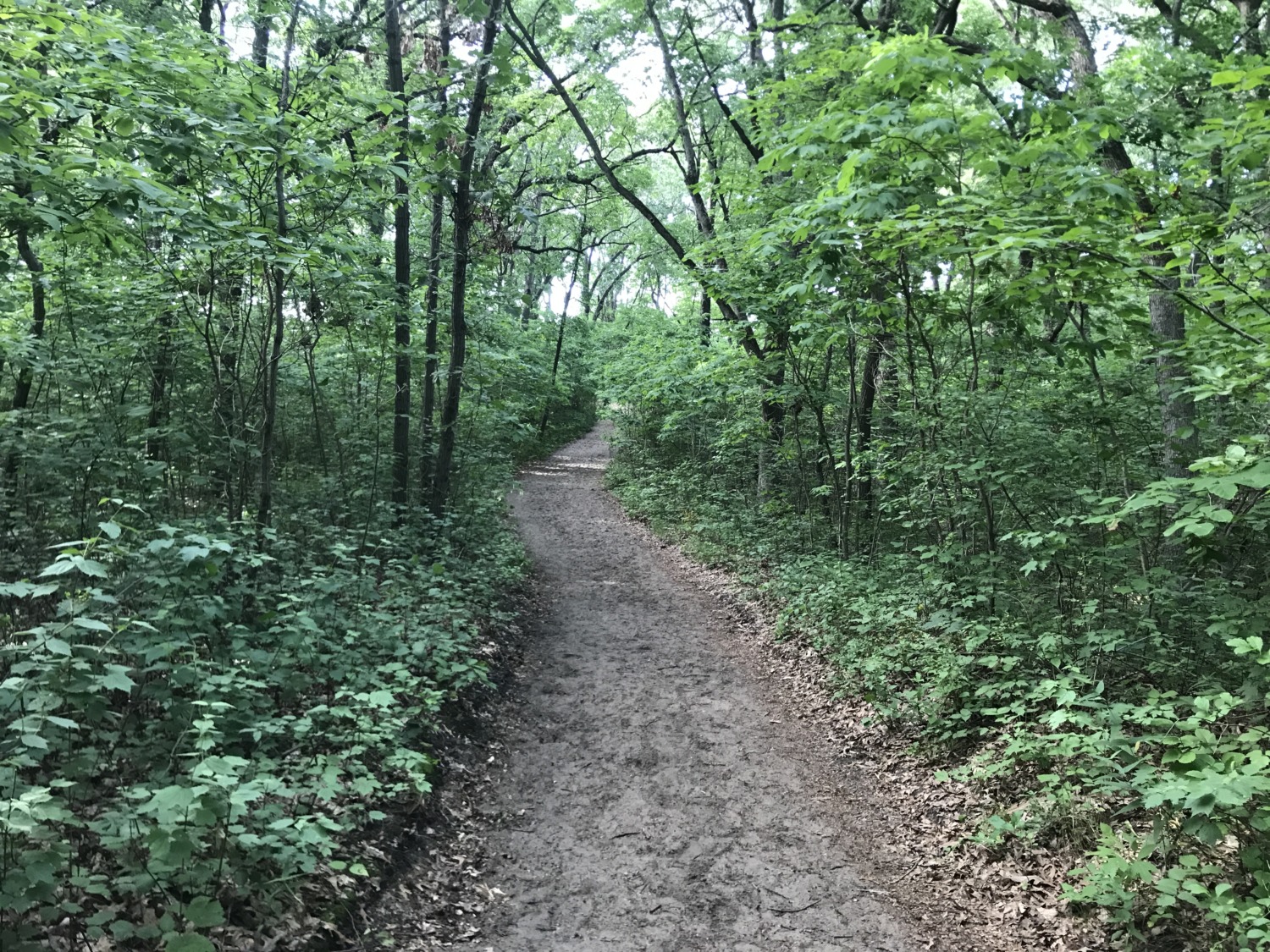

Indiana Dunes National Park knows about all these problems and is trying to work with them. In 2022 they instituted a new program where you can check online and see where there are open parking spots. In looking at this program, I also found out that the West Beach parking lot has 642 parking spots, while the parking lots in the eastern area of the park are much smaller.
Our visit to Indiana Dunes National Park was frustrating. I got my stamp, but we didn’t feel that we enjoyed or appreciated the beauty of the place. Instead, we spent our time there in traffic jams and unable to find parking places or the hiking trails we wanted to take. Tom wanted to be “spontaneous” on this trip, which meant I didn’t do my usual research and planning. We would have had a much better time if I had not checked things out better before we visited.
There was one thing in Indiana Dunes that we enjoyed very much. It was also easy to find a parking spot. We stopped to look at the row of 1933 Century of Progress Homes. This area of the park has five buildings from the Homes of Tomorrow Exhibition of the 1933 World’s Fair which took place in Chicago. Intended to display the future of housing, the Century of Progress Homes reflect a variety of designs, experimental materials and new technologies. The five homes are listed on the National Register of Historic Places. Although the National Park owns the land, the homes are privately owned. But the National Park has to maintain them. Once a year people can take a ranger-guided tour through the homes. Tom and I enjoyed seeing them from the outside and reading about them.
Tom and I did not have a good visit to Indiana Dunes National Park, but it was entirely our own fault. We were in too much of a hurry and didn’t take the time to plan properly for our visit. If I had known which trails we could take to the dunes and where the open parking spaces were, we would have had a much better visit. Lesson learned for the future. Spontaneity is fine, but visiting a National Park (not just a National Park site) requires planning.

